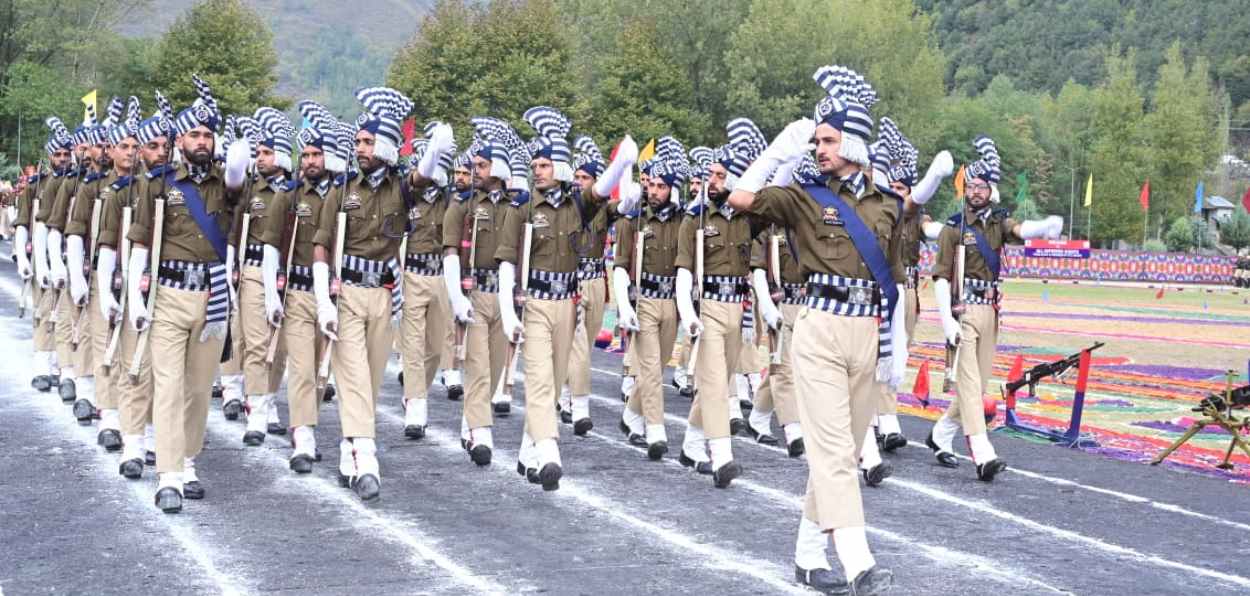
Saquib Salim
In the minds of common people armies are associated with its men and women making supreme sacrifices in the line of duty to safeguard the country, but the police services are often considered safer. The perception is quite misplaced. The police in India are as exposed to lethal attacks as the Army.
Between 1947 and 2020, a total of 35,403 Police personnel sacrificed their lives in the line of duty, protecting and securing the nation and providing security to the common people. To put it in perspective, let’s consider the number of Indian soldiers who had sacrificed their lives in major operations. Indian Army personnel killed in J&K Operation (1947-48) was 1104, in India-China War (1962) – 3250, in Indo-Pak War (1965) – 3264, in Indo-Pak War (1971) – 3843, in Operation Pawan (Sri Lanka) – 1157.
The terrorist attack on Mumbai in 2008 was one of the most televised terrorist attacks. It somewhat changed the perception of the Police service. People saw on their television screens how police are the first line of defense when the nation is under attack. In 2018 the then Home Minister of India, Rajnath Singh, said, “The Mumbai attacks in November 2008 (26/11) shocked the nation and…left an indelible imprint on the minds of the people about the bravery of our policemen and security forces. For four continuous days, Indians were glued to the television sets, their heartbeats aflutter, prayers on their lips, and contempt for the terrorists.”
.jpg)
A memorial to ASI Tukaram Omble who died fighting Pakistani terrorists in Mumbai
He said, “Who can forget the supreme sacrifices of Hemant Karkare, Ashok Kamte, Vijay Salaskar, Shashank Shinde and Tukaram Omble of Mumbai Police, and Major Sandeep Unnikrishnan and Hawaldar Gajendra Singh of National Security Guard (NSG).”
It takes extraordinary situations like the 26/11 attack to bring home the point that police personnel always have their lives at stake while serving the nation. Common people realized this truth when they saw their sacrifices on television. But this was neither the first nor the last incident where police officers made supreme sacrifices.
The Mumbai attacks carried out by ten Pakistani terrorists of the Lashkar-e-toiba were not the first or the last such attacks. India had witnessed Naxalite, Khalistani, Kashmiri, Naga, Bodo, Maoist, and other insurgencies in which rebels used terror tactics to bring the government on its keens since the decade of sixties.
Common people don’t realize that most of the time it was the police that dealt with them. Thousands of police personnel have lost their lives while fighting the enemies of India.
Sumit Chaturvedi (IPS) in his paper Police Martyrdom: Through The Decades writes, “During 1977-87, the nation witnessed different challenges including the problem of Sikh extremism in Punjab. During this decade, 4562 Policemen on duty were martyred. The decade between1987-97 witnessed multiple internal security challenges with terrorism in J&K emerging as a major challenge. Facing the threat squarely, 10,266 Policemen made the supreme sacrifice in the line of duty, making it the highest toll across decades.” The 1980s and 90s have witnessed several terrorist outfits operating in India.
.webp)
CRPF women
The late 1990s and 2000s were the time when Maoist terrorism reached its peak. In April 2010, an ambush by Maoists killed 76 CRPF personnel in Dantewada. The deadly incident made headlines but several attacks where less than 20 police personnel were killed remained unreported from the mainstream media. In 2009 alone more than 300 police personnel laid their lives while fighting Maoists.
The decade between 1997 and 2007 claimed 9430 police personnel lives. The next decade was rather less deadly but still took the lives of 6,381 police personnel.
Another misplaced notion is that while constables are at risk the high-ranking officials live a luxurious and safe life. The evidence is quite contrary.
At the height of Khalistani unrest in Punjab several high-ranking police officials lost their lives. Avtar Singh Atwal, the then IGP Jalandhar was killed on April 25, 1983, while returning after praying at the Golden Temple. In 1987, IPS officers KS Gill and AS Brar were attacked inside the premises of NIS Patiala and sacrificed their lives after a gun battle.
In 1975 Mizo National Front attacked the IGP office at Aizawl and killed three IPS officers, Ghamandi Singh Arya, IGP, DIG L.B. Sewa, and SP CID K. Panchapagesan, after a gun battle.
In J&K the first major strike by terrorists was the killing of A.M. Watali, DIG, in 1988. In the next two years, hundreds of police personnel laid down their lives in J&K.
One may argue that police officers are rather safe in regions where terrorist threats do not exist. They should recall the 2012 killing of Narendra Kumar, an IPS, by the mining mafia. Mukul Dwivedi, SP of Mathura, was also killed by encroachers in 2016 in rather peaceful Mathura.
ALSO READ: Maulana Maududi, et al misinterpreted Islam to give rise to radicalism, intolerance
In the words of Sheel Vardhan Singh (former IPS), the Indian Police is “the glue which keeps the nation and its integrity together is effective control of law & order, terrorism, insurgency and extremism. Thus, the Policemen provide the necessary climate for nation-building. On this front, Indian Police have come out in flying colours, as our country moves from strength to strength.”
